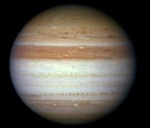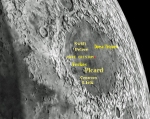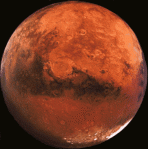Could be host to habitable planets
Star Astronomy News
 Photo courtesy of NASA Photo courtesy of NASA
Binary star systems – Astronomers taking part in the human journey to the beginning of space and time have found star systems the human mind never imagined out among the stars. In fact, they have found that star systems with multiple stars are more common than star systems with a single star, like our own solar system. Star systems with multiple stars of varying sizes have also been viewed during the human journ... Continue reading ...
Spitzer Detects Message from Guardians of the Universe?
Posted by Warren Wong on Sunday, July 3, 2011,
In :
ring nebula
Green Lantern's emerald ring beams across space and time 
Visitors from the stars have often been the main characters in myths, legends, comic book adventures and books and movies created by humans throughout the ages of mankind. Considering the diminutive knowledge humans have of space and time this choice provides the perfect context for adventure and the unknown. The Green Lantern is one of the most popular and beloved DC Comics heroes of all time and more recently a full length feature... Continue reading ...
Science is the Answer to Many of our Problems?
The results of NASA's 18th Annual Great Moonbuggy Race and American schools were once again beaten by racers from the University of Puerto Rico in Humacao and Teodoro Aguilar Mora Vocational High School Team II of Yabucoa, Puerto Rico for the second straight year. The closest American team was the team from the University of Alabama in Huntsville, who finished second in the college division competition, while a number of American teams placed third in the competitions.
You can bet this has t... Continue reading ...
The Women of NASA: Things That Don't Kill You Make You Stronger

Women like Andrea Meyer are part of a new breed of women taking their place in the annals of space history and the human journey to the beginning of space and time. A breed of tough minded, can't-keep-me-down individuals use to people telling they have no chance of success, women like Andrea are big believers in the saying everything happens for a reason. This tough minded lady survived a plane crash years ago that sent her down the path to becoming the program analyst in the Office of the Ch...
Continue reading ...
The Women of the American National Aeronautics and Space Administration

A career in the American National Aeronautics and Space Administration opens doors to a world of exploration and discovery more and more people from around the world are deciding to enter every year. Women and men around all corners of the globe come to NASA to join in the exploration of the universe and the world around us and try to delve deeper than their predecessors into the mysteries surrounding us.
This series of articles is on the women of NASA, their journey from an inspired young w... Continue reading ...
The Ultimate Fate of Our Sun
Posted by Warren Wong on Saturday, November 27, 2010,
In :
the sun
Astronomy for Kids
Question Period

What's the ultimate fate of our sun? How will the sun end its days?
The ultimate fate of our sun, like all of the stars in the Milky Way, is tied to its life cycle. The two main processes astronomers theorize in the life cycle of our sun as being mainly responsible for the ultimate fate of our sun being the fusion of lighter elements into heavier elements and the loss of the sun's mass in a second process that begins after the first is completed.
At pres... Continue reading ...
The Planets Dance Across September's Night Sky
September is one of the year's most entertaining and awe-inspiring months to lay on your back on a dark hill and view the delights of the celestial dance in the sky above you as your ancestors once did on a nightly basis. Four of Sol's dance partners will be in the spotlight in September, 2010, taking part in a nightly dance that includes their less observable brothers and sisters, while Mercury will once again dance privately in the eastern sky each morning during September.
 - Mighty Ju...
Continue reading ...
Green Cheese? Anyone!
Posted by Warren Wong on Friday, November 19, 2010,
In :
the Moon
The Moon waxes-on and waxes-off in September
 - The Moon's Mare is a land feature you don't want to miss during September. NASA Photo.
Focus your time machine to the stars on the features along the Moon's limb during the month of September. This is a rare chance to view a few limb sections of the Moon that star gazers have dreamed of taking a closer look at for generations, during a single month of the year. Astronauts didn't report any green cheese, so our ancestors can rest safely, a... Continue reading ...
Red and Orange Fills September's Night Sky
Posted by Warren Wong on Thursday, November 18, 2010,
In :
the night sky
Journey to Red and Orange stars in September's night sky
 - Color like this only grows and expands the further you travel on your Journey to the Beginning of Space and Time
Fall is in full bloom in the Northern Hemispheres of planet Earth and lovers of the reds, oranges, and bright reds on the leaves of fall will enjoy the rich, warm and colourful hues in the night sky of September and October.
If you're heading out into the wild to enjoy Mother Nature's bounty at this time of year? Aft... Continue reading ...
Water On, Water Off
Posted by Warren Wong on Saturday, November 13, 2010,
In :
Mars
 - Where did all the water go? What water? NASA photo.
More evidence for the case for the presence of water on the Red Planet
Planetary scientists taking a second look at a Mars outcropping first examined by NASA's Spirit Mars Rover back in 2005 think there could be additional evidence for water on large areas of Mars. In specific, planetary scientists have found high concentrations of carbonate, a mineral that scientists have previously shown to originate in wet conditions that diss... Continue reading ...
To be a Planet, or Not to be a Planet?
Posted by Warren Wong on Thursday, November 11, 2010,
In :
Pluto
Count the planets in the solar system and make an assessment of their various sizes and distances from Sol and the Earth as you leave on your journey to the beginning of the universe. You'll find that the line between planet and smaller planetoids, like asteroids and meteorites, has yet to be firmly set in place in the astronomy books, and in the universe.
We were all taught during our school indoctrination of nine planets circling Sol at varying distances. Mercury and Venus lie clos...
Continue reading ...
The Moving Universe
 - The Earth is moving relative to everything else in the universe
Everything on your journey to the beginning of the universe is moving relative to everything else in the universe
 - The Earth rotates on its axis
Staring upward at the night sky above you at first get the notion you're stationary in the universe, but nothing could be further from the truth. The Earth beneath you is spinning on its axis at 1000 km/hr, orbiting Sol at 100,000 km/hr, the Milky Way Galaxy at 800,000 km/h...
Continue reading ...
The Spinning Earth
Posted by Warren Wong on Wednesday, November 10, 2010,
In :
the Earth
 - The earth rotates on its axis in about 24 hours, give or take a few minutes
The Earth rotates on its axis each day
 - The Earth goes through a number of different positions which astronomers have measured
The Earth is constantly in motion relative to everything around it and rotates on its axis once every day and orbits Sol once per year. The Earth's axis is defined as an imaginary line connecting the North and South poles and passing through the center of the planet. The Ea...
Continue reading ...
The Earth's Movements: Spaceshipearth1's Orbit
 - The combination of the Earth's movements help to create the seasons and environment of Spaceshipearth1. Photos courtesy of Google.
The Earth's orbit around Sol and other things
 - A little seasoning anyone!
The Earth beneath you and the night sky above you are both moving relative to each other and you, and the universe around you. The Earth not only spins counterclockwise on its axis, but also orbits Sol about once every 365 spins on its axis, give or take a few minutes...
Continue reading ...
Navigating the Universe Using the Stars as Your Guide
Astronomers use coordinate systems to plot the position of stars in the night sky
Looking up into the night sky you probably wonder how ancient star gazers were able to navigate using the stars in the night sky as their guide. One of the first things ancient star gazers did to help them navigate the night sky, and the surface of the Earth, was to create a coordinate system to pinpoint relative positions of the stars in the night sky in relation to one another.
Looking upward into the night ... Continue reading ...
Deep Impact Shows Comet Scientists Something New
Posted by Warren Wong on Friday, November 5, 2010,
In :
comets
 - The EPOXI mission is just the first step. NASA photos.
Deep Impact approaches comet Hartley 2 and will arrive at its nearest location on November 4
NASA's EPOXI mission is currently on a journey to comet Hartley 2 and Deep Impact as this mission is more commonly referred too will arrive at its nearest spot to this icy world on November 4. NASA was using imagers on Deep Impact during the days between September 9-17 to get a view of comet Hartley 2 before the spacecraft arrives on locatio... Continue reading ...
Explore the Celestial Zoo of Pulsars
Posted by Warren Wong on Friday, November 5, 2010,
In :
pulsars
 - The Crab Nebula was one of the first pulsars viewed during the human journey to the beginning of the universe. Photos NASA.
Browsing through a popular and well-read book on astronomy from the 1980s, one might get the idea astronomers have pierced the veil of secrecy surrounding stellar bodies we refer to as neutron stars. Astronomers and star gazers have boarded their time-machine-to-the-stars to journey to exotic parts of space and time to view these strange celestial bodies for decad... Continue reading ...
One Decade Living Where no man has Lived Before
 NASA photos NASA photos
Human beings have been living in space aboard the International Space Station for one decade on November 2, 2010, and the 10th anniversary of human beings living in permanently in space was celebrated this morning at 9:30 a.m. EDT with a new conference from the Kennedy Space Center in Florida featuring the six astronauts currently living on board the International Space Station. The subsequent news conference was open to accredited media representatives at participating NASA or ...
Continue reading ...
|
Author
Warren Wong
Prince George, British Columbia
|